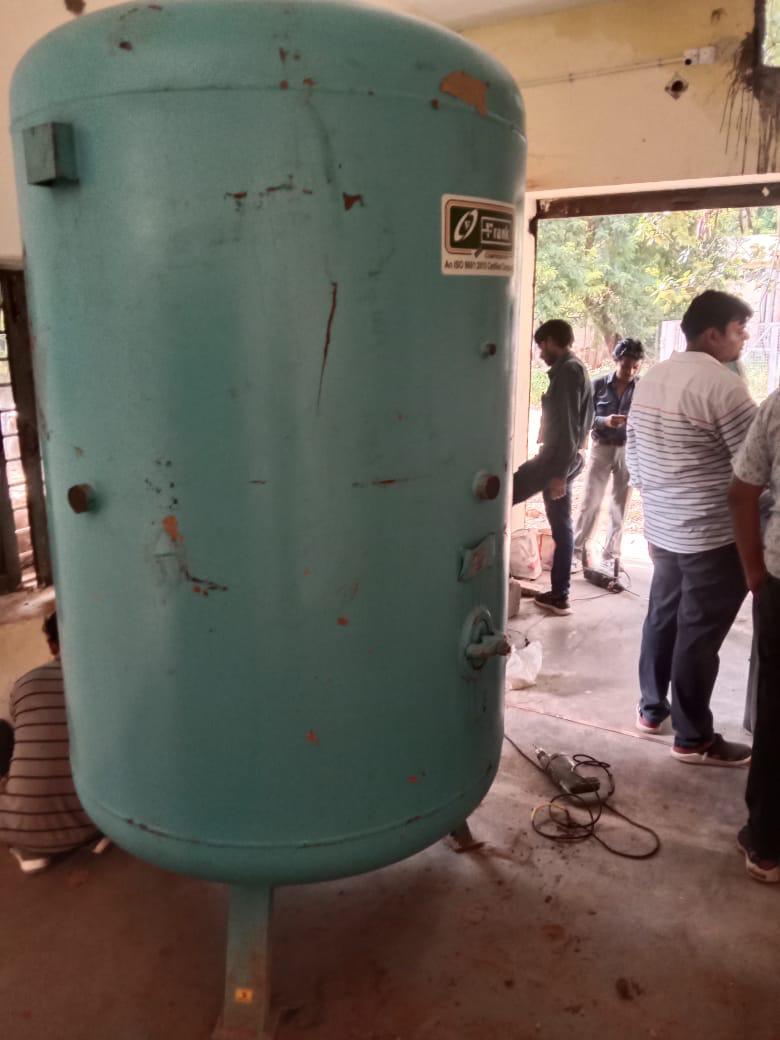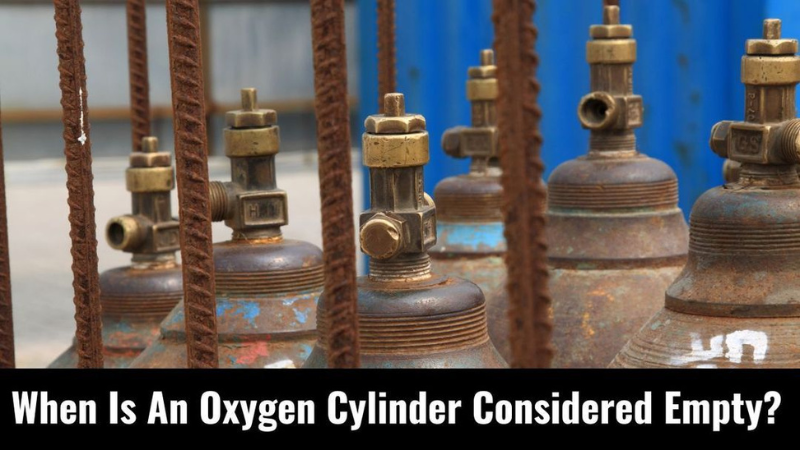The label on the oxygen cylinder indicates how many liters are inside when it is full. The pressure gauge's reading will indicate how full the cylinder is, often in gross divisions from full to empty. However, it is unknown how much volume is now present in the cylinder. We could determine how long the cylinder content would survive at a specific flow rate if this information were available. But since it is typically necessary to perform this computation when patients are transferred, it becomes just another thing to keep in mind. A recalculation would be faster and more accurate.
The use of a table to display the lifespan of oxygen cylinders at various flow rates. If the person bringing the cylinder is unsure of how long the contents will last, they can check with the clinician to find out how much flow will be needed and for how long. This can save time. As a result, the clinician won't be given a cylinder that needs to be replaced after the trip because it failed.
The pressure gauge can give an accurate reading for both pressure and volume because volume is a constant and temperature is often stable in a medical setting. Since oxygen is kept in a gaseous state in the cylinder and has a critical temperature of 119°C, this is a suitable application for it. Rounding up these computations to the nearest lesser round values (e.g., 63.75 min rounded to 63 min). Although it may be tempting to intentionally reduce the estimated duration by a certain amount (for example, by 5 minutes) as a safety margin, doing so may lead some people to overestimate this safety margin under the assumption that it may be forgotten in the future, which would then bring back the element of guesswork in determining the volume of the cylinder.
It's vital to remember that other institutions' E cylinders either contain 679 litres or have brand-new BOC oxygen E cylinders that only contain 643 litres, which will overstate the amount by 6% and increase the risk of an earlier than predicted oxygen shortage. By looking at the cylinder pressure recorded at the primary regulator's gauge, you may determine if a cylinder is empty.
When Is An Oxygen Cylinder Considered Empty?
Cylinder for Suremix
Because the mixed gases in a cylinder are constantly gaseous, the pressure gauge always displays the correct amount of gas in the cylinder .
• Compared to CO2 cylinders, the pressure in mixed gas cylinders is higher (up to 220 bar) (50 bar)
• The cylinder is empty if the gauge is at or near zero (or in the red zone, if the gauge is color-coded).
• substitute a full cylinder of the same type in its place.
Cylinders for suregas

The pressure gauge will always read "full" until all of the CO2 has been consumed because CO2 is always in a liquid form when it is in a cylinder.
• The pressure gauge will rapidly decelerate towards zero when the cylinder is almost empty and only residual gas is present.
• The cylinder is empty if the gauge needle is close to zero (or in the red zone if the gauge is color-coded).
• substitute a fully-filled cylinder of the same type.
There would undoubtedly be stringent legal regulations pertaining to any compressed gas cylinders. a few things to think about. You might not assume that oxygen would be dangerous on its own because it doesn't burn and isn't toxic, poisonous, or destructive to other living things. As long as you exercise caution, you are free to release all the gas if you are in charge of it.
Until it is completely empty, never leave it unattended. Judges are not permitted to offer justifications. To avoid pressure buildup, freezing, or anywhere near an ignition source, you will slowly and carefully exhaust it to the open atmosphere outside. The cylinder will be secure and sturdy, you'll be controlling the valve at all times while wearing leather gloves, and you'll wait until the venting has reached ambient temperature before moving the cylinder.
The operation is safe, but mistakes might happen, therefore you must be able to halt the flow of gas at any time. Since you are in charge, you are responsible for any mistakes that are made. A cylinder should never be drained below 172 kPa (25 psi/in2) of pressure (the residual contents may become contaminated if the valve is left open).In order to issue visual and audible alarms when the oxygen pressure of a medical oxygen tank has decreased to a predetermined pressure, deemed too low to provide the needed and/or prescribed oxygen flow rate to a patient, a cost-effective method is provided for determining empty and/or near empty medical and other medical emergency oxygen tanks. This method uses a single, simple device for practising the method, comprising five or six easily accessible components.
How Is Medkav Helping?

Since our products provide a revolutionary form of oxygen generator with numerous modules connected in parallel and containing molecular sieves or zeolites, Medkav may be the best solution for an oxygen generator. Each module is independent; if one fails due to a filter failure, the others will continue to function with a straightforward pipe+cable connection. This module can be used in a number of different applications. The newly developed Adsorber, which makes use of Mechanical Pre-tightening Technology, efficiently lessens friction between molecular sieves, leading to lower molecular sieve pulverisation, longer sieve life, and higher purity levels.
Our partnership may be a process rather than a one-time event, and it is customised to meet our customers' present and future demands. We offer prompt and attentive service, a team of experts with a variety of strengths to help our clients resolve various varieties of service issues at fair prices, and an enamoured single point of contact account manager to service each client, in contrast to the majority of other businesses (current market alternatives/competitors).
Due to their technical excellence, high reliability, and favourable performance-price ratio, Medkav products are well known and respected in medical institutions all over the world. We work together with reputable domestic and foreign vendors.

